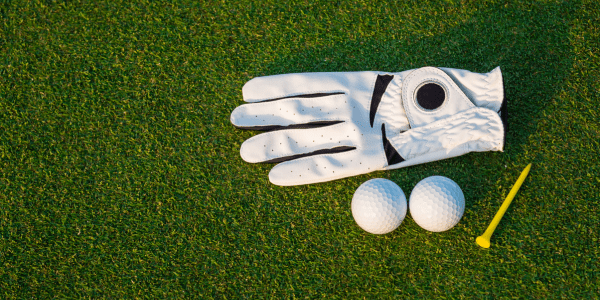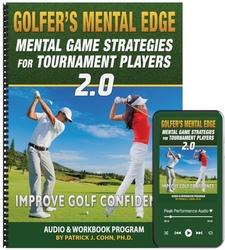
Composure After a Bad Golf Shot
Golf can be frustrating to say the least…
One minute, you are having a great round. You just had a string of 10 holes where you played outstanding. The next hole, you double bogey and it’s downwards from there.
It’s amazing how a double-bogey on one hole can totally reverse how you are playing… if you let it.
You see, one shot or one hole should not dictate your how you finish out a round or your overall play on the course.
A bad shot or two can send some golfers into a downward spiral. Negative thoughts start swirling in your head, intense negative emotions spring up and muscles tighten.
All of these distractions pull your focus away from how you approached early shots when you were driving the ball long and straight… were on top of your short game… and nailing putts with relative ease.
If you could refocus and return to that previous approach when you were playing great golf, you could quickly get back on track and prevent that downward spiral.
Jordan Spieth’s performance at the 2019 AT&T Pebble Beach Pro-Am is a prime example of how a bad shot can set in motion negative thinking and intense emotions that can alter a golfer’s play in seemingly a moment.
Spieth shot a 66 and 68 in the first two rounds putting himself in contention for winning the tournament.
Bouncing Back From a Setback
In Round 3, Spieth pulled his tee shot off course on the 13th hole and it landed among the trees. Spieth had difficulty even finding his ball and ended up making double-bogey on the hole.
That bad shot set in motion a string of bad shots including a 3-putt bogey on the 17th green and a tee shot that landed in the water for another double-bogey on the 18th hole. Spieth ended the day with a 74 and he followed up that play with a 75 on the 4th round.
Spieth commented how he felt after Round 3 which definitely affected his focus for Final Round.
SPIETH: “I’m very frustrated. If I just go par, par, I’m essentially still in this tournament with what’s forecasted tomorrow. I kind of threw myself out of this tournament. So yeah, it will affect me for awhile.”
The first step in refocusing after a bad shot are:
How did you play so well prior to that bad shot?
If you can learn to take a pause and return to that previous mindset, you can bounce back on the next hole.
But it is critical that one bad shot doesn’t turn into six because the longer you stay frustrated or upset, the harder it becomes to switch out of that mindset.
How to Rebound After a Bad Shot:
Recovering from a bad shot is more mental than physical. The ability to let go and refocus is a skill and skills need practice to sharpen.
I suggest you memorize your “move on” statements, such as
- It’s in the past, move on.
- Can’t change the shot, do the best I can going forward.
- That’s behind me, focus on what’s next.
- Stop dwelling on the past. Focus on the next hole
Remember that you can’t get a bad shot back. You can only play on with composure.
Related Golf Psychology Articles
- How to Find the Zone on the Golf Course
- Do You Mentally Prepare for Tough Conditions?
- Stable Mindset on the Golf Course
- Subscribe to The Golf Psychology Podcast on iTunes
- Subscribe to The Golf Psychology Podcast on Spotify
Golfer’s Mental Edge 2.0

Do you suffer from fragile self-confidence after missed hitting shots or making mistakes, playing with strict or high expectations that undermine confidence, or the inability to play freely and relaxed on the course?
Successful golfers have learned how to perform with ultimate confidence in competition, so we’ve developed The Golfer’s Mental Edge 2.0 Workbook and Audio program to help you do this!
The Golfer’s Mental Edge 2.0 program includes the top 11 mental training sessions I do with my personal students to help them boost their mental game and improve consistency on the course!